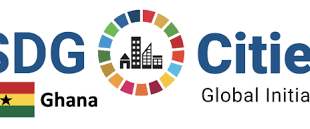
The government plans to raise $889m from new taxes this year to contain its deficit. That commitment means the country “should be able to borrow”, says Charles Robertson, global chief economist at Renaissance Capital.
Still, Ghana’s debt level is amongst the highest of any country we look at, and without the backstop of an IMF deal,” Robertson says. It means they need to demonstrate a lot of fiscal restraint.
The slow pace of the consolidation path outlined in Ghana’s budget statement of 12 March leaves Ghana exposed to “risks of fiscal slippage”, according to Fitch Ratings. The budget aims to reduce the fiscal deficit from 13.8% of GDP in 2020 to below 5% by 2024.
Crunch time
Debt levels were already a concern before the Covid-19 pandemic, says Leeuwner Esterhuysen, an analyst at NKC African Economics in Cape Town. Esterhuysen estimates that government debt will rise to 92.1% of GDP this year, up from 86.9% in 2020.
Easy financing conditions have made tax collection less urgent in recent years, and Ghana’s government revenue-to-GDP ratio has slipped, Bohlund says. “This trend needs to be reversed.”
In 2019, tax revenue represented 12.2% of Ghana’s GDP, compared with 15.1% in Kenya. That is also behind Zambia, which defaulted on its debt in 2020 and has a five-year average of 18.5%.
With interest costs and the public-sector wage bill absorbing around 90% of government revenue, cutting the budget deficit will depend on increasing tax collection, which tends to be a gradual process, Bohlund says.
This will take the time that Ghana simply does not have, making any turnaround very difficult to envisage.
There is, Fitch, says “a significant risk that public finances could fall short of the goals outlined in the budget, particularly given the government’s lack of a clear majority in parliament.”
Bottom line
The pressure is on for President Nana Akufo-Addo to prioritise improving tax collection in his second term.
By: Abdul-Aziz Mohammed
Financial Analyst
Source: Thepressradio.com|Ghana|Dickson Boadi
 Home Of Ghana News Ghana News, Entertainment And More
Home Of Ghana News Ghana News, Entertainment And More





